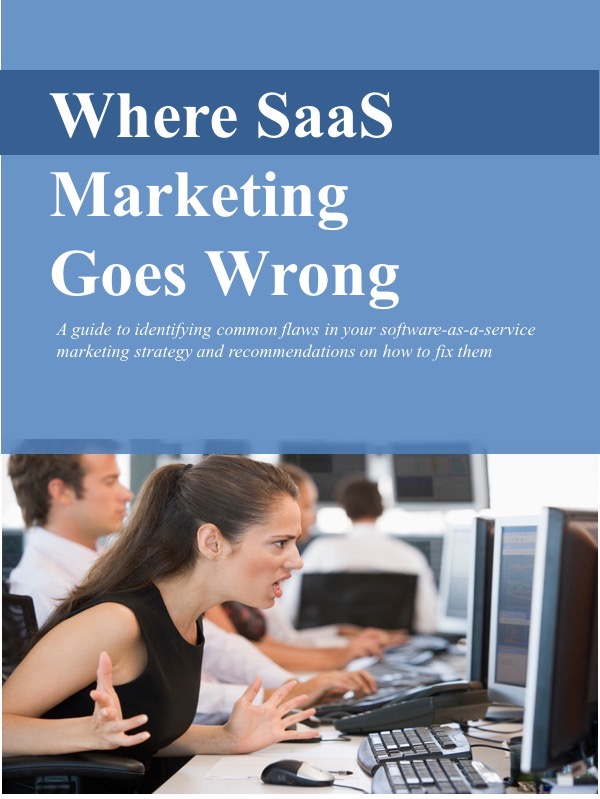SaaS Marketing and Sales People Shouldn’t Be at War
/From what I can tell, marketing people and salespeople come from different gene pools. They have different skills, different motivations, different comp schemes, and different goals.
But they shouldn’t be at war.
In fact, for software-as-a-service (SaaS) companies, when marketing people and salespeople don’t work together, bad things can happen. It takes longer and costs more money to acquire customers, and those customers are more likely to leave.
In the lingo of SaaS metrics, this hurts the customer acquisition cost/customer lifetime value ratio. That can sink SaaS companies.
I’ve seen this battle between marketing and sales up close and personal. Though the precise words may vary and be more colorful, the argument goes essentially like this:
Marketing: We’re creating a ton of leads, but the salespeople just ignore them.
Sales: The “leads” we get from marketing are worthless and not worth contacting.
This sniping back and forth, each side blaming the other, is not helpful…but it’s not inevitable. Let me offer a few suggestions that may help resolve the conflict.
Talk to each other
Marketing people and salespeople should communicate. Yes, it sounds obvious, but it’s not always easy, especially when they are working in different locations.
At a minimum, salespeople should be aware of marketing material – papers, success stories, demo videos, etc. – that is available to help them in their sales efforts. And, of course, salespeople should be certain that what they’re saying to prospects is in sync with what the marketing team is promoting. (See Do you need a value proposition policeman?)
For their part, marketing people should use salespeople to better understand customers. Talking with them is an effective way to gather valuable knowledge about what prospects are looking for, what solutions they’re evaluating, and what is working for them and what’s not. (See Listen to your SaaS customers.)
I’ve been in organizations where marketing and sales teams met every two weeks for a catch-up, and I’ve been in others where a face-to-face was scheduled every quarter. Whatever works best for your organization, it’s worthwhile.
Focus on the end-to-end customer acquisition process
I encourage my clients to look broadly at the overall “customer acquisition process,” and not the discrete elements of marketing and sales in isolation. Consider the entire pipeline, from gaining visibility and capturing contact information, through cultivating leads, and closing sales. And importantly in SaaS companies, there’s the added task of retaining and upselling existing customers.
No doubt certain tasks – website design, SEO, email marketing, etc. – require deep expertise and focus. But someone also ought to be paying attention to what happens upstream and downstream from each of the individual elements of the process. Sure, a brilliant video may be driving lots of visitors to your website, but then what? Are those visitors converting into contacts and leads? Or an effective promotional campaign may be encouraging customers to evaluate an upgrade, but is there an efficient process in place to deliver the upgrade?
Remember that the goal is not just views, likes, contacts, and leads. It’s long-term paying customers.
Not looking at the entire process, end-to-end, can lead to gaps and bottlenecks and prospects get stuck in the pipeline. I See Why drive-by marketing doesn’t work.)
By the way, I do understand that this topic usually wanders into the dangerous territory of incentive and compensation schemes, for example rewarding marketing people for leads. I’m going to avoid opening that can of worms for now.
Sometimes prospects move backwards
In an ideal world, prospects would move only forward: from lead to qualified opportunity to new customer. But that’s not what happens in the real world, especially in the SaaS world.
Often prospects get distracted by other priorities and stop moving forward. In fact, they might even move backward, regressing from a well-qualified opportunity back to a lead. (See Sometimes prospects just aren’t ready to buy.)
When that happens, salespeople should be able to pass those prospects back to marketing. Marketing is better equipped to cost-effectively nurture those prospects until they are ready to move forward again, and salespeople can concentrate on prospects that are closer to a purchase.
It may be too much to ask for some kind of kumbaya between marketing and sales. But that’s not really required. A process that leverages the strengths of both groups and harnesses them toward a common goal – cost-effectively acquiring long-term customers – is all we’re really looking for.
